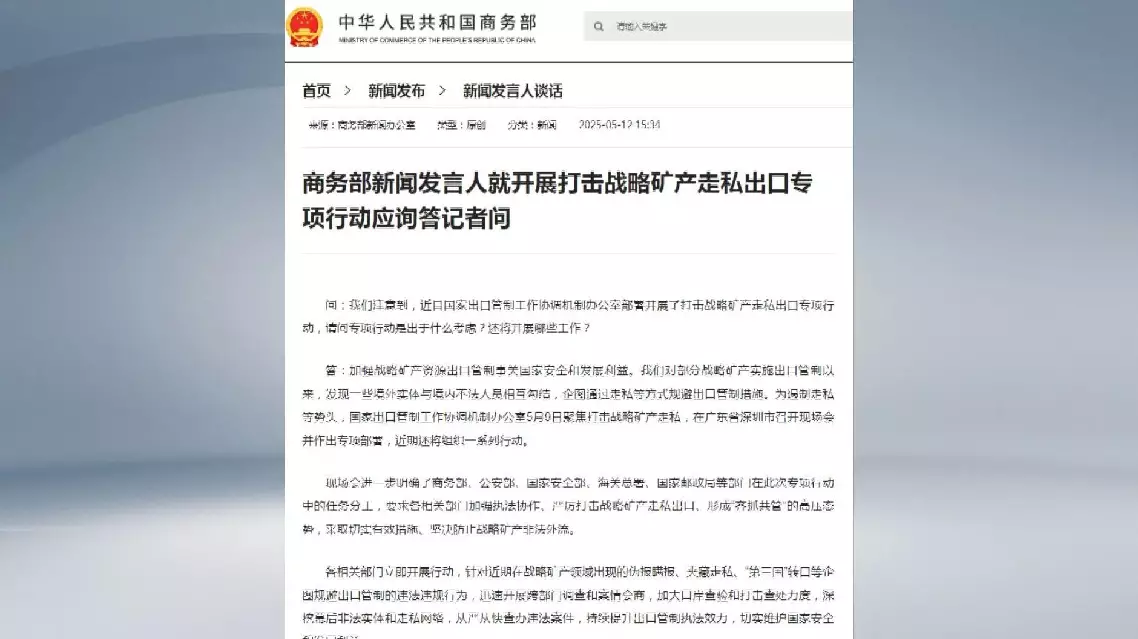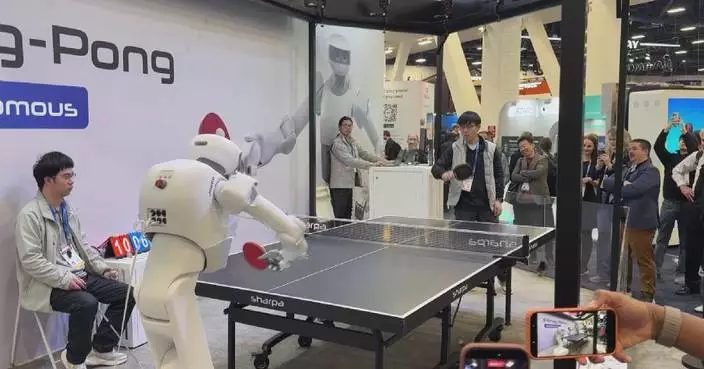China will take practical and effective measures to resolutely prevent the illegal outflow of strategic minerals, the Ministry of Commerce said on Monday.
Strengthening the export control of strategic mineral resources is crucial to national security and development interests, according to a ministry spokesperson.
Since China implemented export restrictions on some strategic minerals, it has been found that some foreign entities have colluded with illegal domestic individuals, attempting to evade export control measures through smuggling and other means, the spokesperson noted.
To curb the smuggling of these strategic resources, China has launched a campaign to crack down on illegal and non-compliant activities such as false declaration, concealment, and transshipment through third countries, the spokesperson said.
China has also intensified customs inspections and efforts to combat and investigate such activities, thoroughly uncovering the illegal entities and smuggling networks behind them, in a bid to effectively safeguard national security and development interests, according to the spokesperson.
More actions will also be initiated to crack down on illegal activities in the near future, the spokesperson added.
On Monday, China also convened a meeting in Changsha, capital of central Hunan Province, to strengthen "full-chain control over strategic mineral exports."
Participants included officials from several central government departments and strategic mineral-rich provincial-level regions.
During the meeting, it was emphasized that all departments and localities should closely track the flow of strategic minerals, strengthen information analysis and sharing, and promptly issue warnings and take relevant measures to prevent the illegal outflow of strategic minerals.

China pledges concrete measures to prevent illegal outflow of strategic minerals
The Iranian government is focusing on public concerns and maintaining stable supplies of essential goods amid recent protests, Iranian President Masoud Pezeshkian said in a televised interview on Sunday.
In the city of Karaj, northwest of the capital Tehran, daily life has largely continued as normal. A video filmed by a local resident on Sunday shows food stores open and grocery shelves fully stocked.
"This is the block near my home, and there are some food stores here. Daily life continues here. Last night we did not see many protests in Karaj. Right now the city is very safe. This is a grocery store close to my home. All the food is available; nothing is in shortage. Here are noodles and different types of beans. Here are dairy products, cheese, and yogurt. I also checked other grocery stores and didn't see any shortages. Everything is available," said local resident Ali Reza.
Iranian officials have described recent disturbances as acts orchestrated by the "enemy," including some carried out by well-trained and armed "terrorists." The incidents have caused casualties among security personnel and civilians, as well as property damage.
The Secretary of Iran's Supreme National Security Council Ali Larijani has directed authorities to severely punish the "terrorists."
Meanwhile, Iran's police chief Ahmad-Reza Radan said on Sunday that the police had raised alert levels and arrested several leaders of the troublemakers during the operations on Saturday.
President Pezeshkian noted in the interview that the normal demands of the Iranian people are reasonable and justified, but they must realize that triggering riots and carrying out terrorist acts are the enemy's attempts to undermine the country. He urged the public to remain vigilant.
Also on Sunday, Iranian Parliament Speaker Mohammad Baqer Qalibaf warned that Tehran would regard U.S. and Israeli bases and facilities in the Middle East as "legitimate targets" if Washington takes military action against Iran. His remarks followed media reports saying U.S. President Donald Trump is "seriously considering authorizing a strike" against Iran.
Iranian state media reported that at least 109 members of Iran's security forces have been killed in clashes since the protests began 14 days ago. Meanwhile, human rights groups based outside the country said the number of protesters killed has exceeded 200, though the figure could not be independently verified.
The protests initially erupted over a sharp depreciation of the rial and sweeping subsidy reforms. Iranian authorities have blamed the unrest on foreign-linked agents and sanctions imposed by the United States.

Iranian president says government focusing on ensuring supplies amid protests










